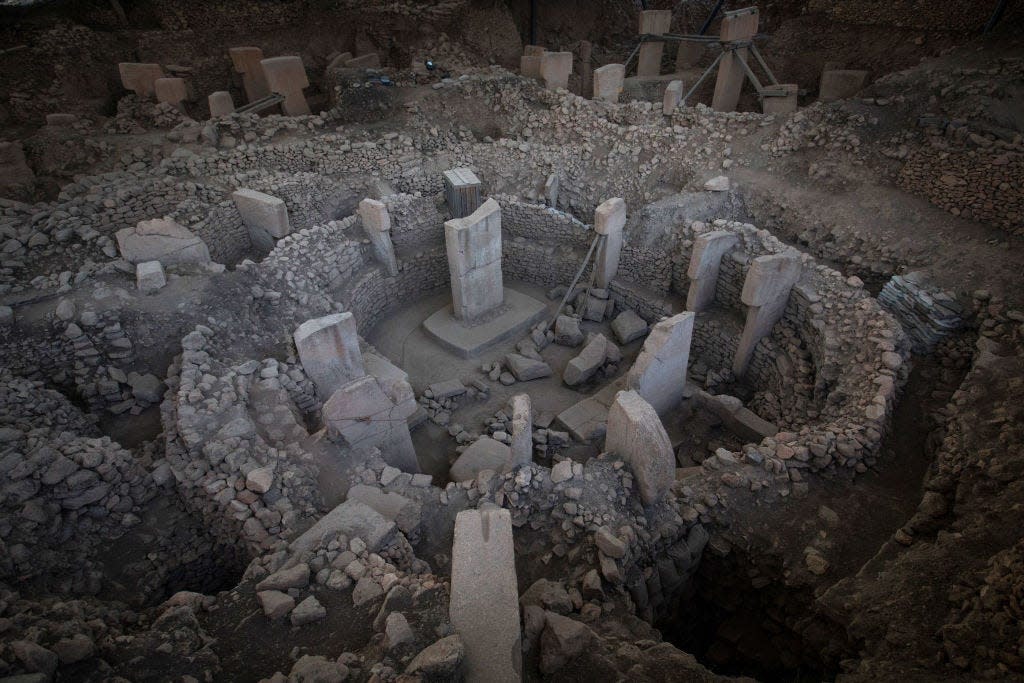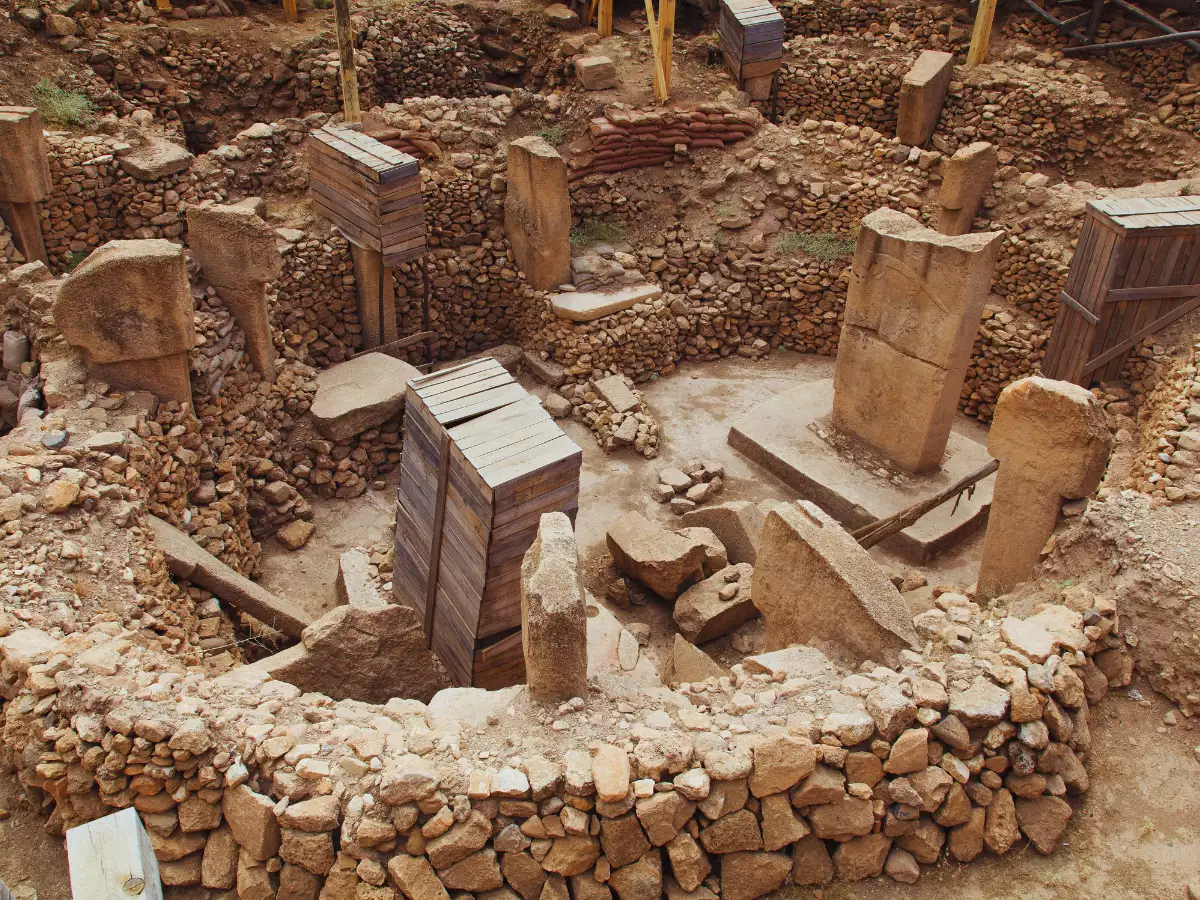Perched atop a hill in southeastern Turkey lies Göbekli Tepe, one of the world’s oldest and most mysterious archaeological sites. Built around 12,000 years ago—long before the Egyptian pyramids or even Stonehenge—this prehistoric sanctuary has puzzled researchers for decades. Massive stone pillars, arranged in rings, are carved with strange and detailed animal figures, symbols, and abstract markings.
But now, a fresh wave of research suggests something even more astonishing: these carvings may not just be decorative or spiritual—they could represent the world’s oldest calendar. If true, this would mean that early humans were tracking solar days and years millennia before writing, agriculture, or civilization as we know it.
Göbekli Tepe (pronounced guh-BEK-lee TEH-peh) was first discovered in the 1960s, but its true importance didn’t come to light until the 1990s, when excavations began to reveal its astonishing complexity. The site features monumental stone pillars—some weighing over 10 tons—arranged in circular enclosures. These pillars are elaborately carved with animals like foxes, scorpions, birds, and snakes, as well as geometric patterns whose meanings are still debated.
What’s striking is that this was all built by hunter-gatherers, thousands of years before the invention of metal tools, wheels, or writing. How did they move such massive stones? Why did they build it? And what were they trying to say?

A recent interpretation of the site’s symbols proposes that Göbekli Tepe was used to track the passage of time—specifically, solar days and annual cycles. Researchers noticed that some carvings appear to follow a recurring pattern, which may correspond to changes in the sun’s position throughout the year.
One particular enclosure, known as Enclosure D, has been the focus of this theory. Some believe that the orientation and arrangement of certain pillars, combined with animal symbolism, could reflect constellations or solar alignments.
Essentially, the theory goes like this: early humans, deeply connected to the rhythms of nature, began recording the passing of seasons by watching the sun and stars. These carvings may be their way of preserving that knowledge, long before they could write it down.
If Göbekli Tepe is indeed a solar calendar, it would completely reshape our understanding of early human cognition. It suggests that humans were not only spiritually inclined, but also scientifically observant—tracking the heavens, measuring time, and embedding it into stone.
It also challenges the long-held belief that agriculture came first, and complex societies followed. Göbekli Tepe may flip that idea on its head, suggesting that large-scale ritual or astronomical observation could have been the catalyst for communities coming together—eventually leading to agriculture, cities, and civilization.
In other words, maybe we didn’t plant seeds first. Maybe we looked at the stars.
Whether or not the calendar theory is ever definitively proven, Göbekli Tepe remains one of the most extraordinary places on Earth. It’s a site that whispers across time, reminding us that the human drive to understand our world is ancient, and deeply rooted in wonder.
These people, living in a world untouched by modernity, carved their stories and questions into stone. And now, 12,000 years later, we’re still trying to understand what they saw, what they knew, and what they were trying to tell us.
Maybe it was the passing of the seasons.
Maybe it was the movement of the sun.
Maybe it was something more mysterious altogether.
But one thing is clear: even in the very earliest chapters of our shared human story, we were already reaching for meaning in the sky.






